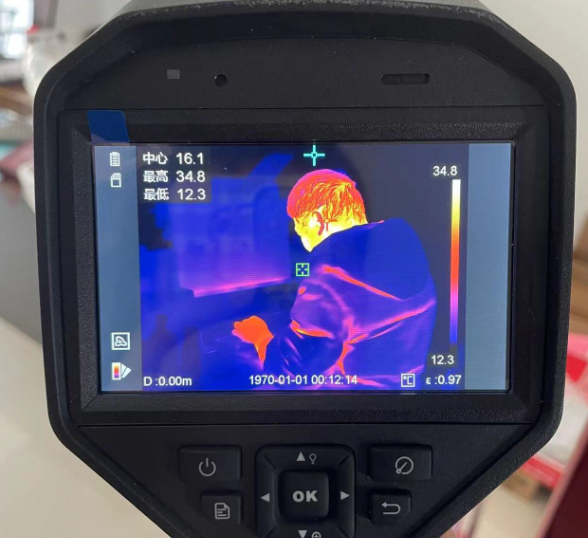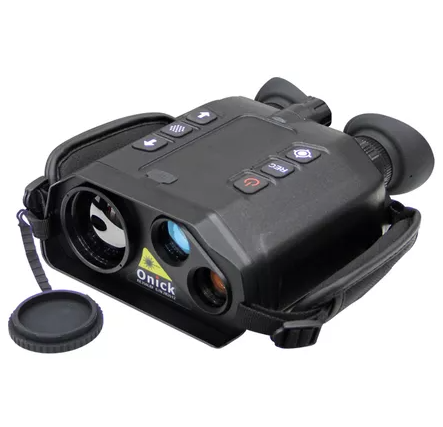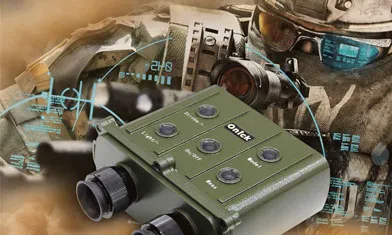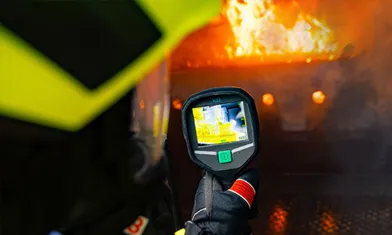Infrared Thermal Imager Manufacturers Are Deeply Involved In The Power Inspection Market
Infrared thermal imagers are revolutionizing power grid inspections: they provide non-contact, rapid detection of abnormal equipment temperatures, offering efficiency, safety, and precision, replacing traditional manual methods. Manufacturers like Onick Optics are driving technological advancements, combining high resolution with intelligent analysis and portable design to ensure the safe operation of the power grid.
Power grid inspections are crucial for ensuring safe power grid operation. Traditional manual inspections are plagued by inefficiencies and high risks. With the advancement of infrared thermal imaging technology, infrared thermal imagers have gradually become a crucial tool for power grid inspections. Through continuous investment and technological innovation, some infrared thermal imager manufacturers have achieved significant progress in the power grid inspection market.

1. Advantages of Infrared Thermal Imagers in Power Grid Inspections
Power equipment generates heat during operation, and abnormal heating is often a precursor to failure. Infrared thermal imagers can quickly and non-contactly measure the surface temperature distribution of equipment, helping inspectors identify potential problems promptly. Compared to traditional visual inspections or spot pyrometers, infrared thermal imagers offer the following advantages:
- Efficiency: They can quickly scan a wide area of equipment, reducing manual inspection time.
- Safety: They eliminate the need for close contact with live equipment, reducing operational risks. - Accuracy: Able to visually display temperature distribution, facilitating analysis of anomalies.
In contrast, traditional spot pyrometers can only measure temperature at a single point, while technologies like ultrasonic testing are more suitable for mechanical fault detection and are unable to directly reflect the heating status of electrical equipment. Infrared thermal imagers play an irreplaceable role in power inspections.

2. Technological Developments of Infrared Thermal Imager Manufacturers
In recent years, some infrared thermal imager manufacturers have continuously improved product performance through technological innovation, making them more suitable for power inspection needs. Take Onick Optics, for example. Founded in 2004, the company specializes in the research, development, and application of infrared thermal imaging technology, night vision devices, telescopes, speedometers, and laser rangefinders. Based on its proprietary infrared chips, the company achieves low-cost, mass-produced production and has accumulated over two decades of infrared application experience.
In the power inspection field, products from these companies typically possess the following features:
- High Resolution: Capable of clearly capturing subtle temperature differences, improving fault identification.
- Intelligent Analysis: Some devices automatically identify hotspots and generate reports, reducing manual interpretation errors.
- Portability: Lightweight design makes them easy to carry and suitable for field operations. These technological advances have led to the widespread use of infrared thermal imaging cameras in the power industry, enabling efficient inspections from substations to transmission lines.

3. Comparison with Other Inspection Technologies
In addition to infrared thermal imaging cameras, technologies such as ultraviolet imaging and ultrasonic testing are also used in power inspections. Each technology has its own advantages and disadvantages:
-UV imaging: Primarily used to detect corona discharge, but less sensitive to thermal faults.
-Ultrasonic testing: Suitable for detecting mechanical looseness or partial discharge, but cannot directly reflect temperature changes.
-Traditional manual inspections: Relying on experience, inefficient, and posing safety risks.
Infrared thermal imaging cameras, by contrast, offer excellent coverage for temperature anomaly detection and are easy to operate, thus dominating power inspections.
4. Market Applications and Future Trends
As the scale of power systems expands, the demand for efficient inspection technology continues to grow. Infrared thermal imaging camera manufacturers are further promoting the adoption of this technology in the power industry by optimizing product performance and reducing costs. For example, some companies have launched online infrared monitoring systems that enable 24-hour temperature monitoring of critical equipment, reducing the risk of sudden failures. In the future, with the development of artificial intelligence and the Internet of Things (IoT), infrared thermal imagers may be integrated with automated inspection robots and big data analysis platforms, further enhancing the intelligence of power line inspections.
Overall, infrared thermal imager manufacturers, through their continued involvement in the power line inspection market, have driven technological advancement and expanded applications in this field. With their efficiency, safety, and accuracy, infrared thermal imagers have become an indispensable tool for modern power line inspections.





















